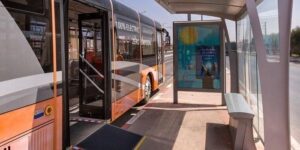
Compared to other B2C counterparts, the African B2B start-ups possess a greater advantage. However, entrepreneurs who are into complex business ecosystems are often found struggling to ensure they meet the standard set. Getting into the market can be a challenge to some of these businesses like the transport business.

The Co-Founder of WhereIsMyTransport, Devin de Vries tells his own story of how he got into the market. Disruption of business ecosystems seems more difficult than it appears to be around the world, but Africa proves to be special as the bar is much higher specifically in the public sector. Due to its combination of chaotic private operators, trains and public buses that are subsidized, some of the governments are bent on making life difficult for entrepreneurs.
The African city transport ecosystem is just tough to achieve success.
In this case, curiosity is inevitable as one would ponder how de Vries was able to co-found WhereIsMyTransport and make huge impact. Everything began as a University thesis project in June 2008 at the University of Cape Town. To start off the project, a team was set up to proffer solution to a problem in the real world. In order to achieve this, they began solving the smaller problem of the University’s shuttle bus. He stated that his team realized that they needed not just one operator and they went in deeper to think on behalf of the entire transport sector.
Soon after finishing the project and completing their studies, the decision to get involved in the Microsoft Imagine Competition 2008 was made by the founding team. There were 220,000 contestants(in 3-4 person teams) from over 40 countries.
In the category of most business ready solution, de Vries revealed that they finished in the top 3 worldwide. They discovered along the line that rather than ending as a mere University project, this could actually be extended to be a commercial service.

However, even though this young team had seen this as a great business opportunity, the problem now was getting it to work. The business passed through three different stages. At first, they thought of creating an app where they could place all the info for the transport users, making transport options and timings transparent.
The team became aware of the fact that sending out the wrong information could destroy them. There were problems related to safety, predictability and reliability. Some of the solutions didn’t solve the frequency problem. Hence, they arrived at a conclusion that the B2C (Business to Consumer) was not the right path so they changed lanes to the B2B (Business to Business). This system can easily go online in the major cities of developed countries.

The Route
However, the total ecosystem requires a period of time to be fully developed. de Vries said that connecting the parts together was their duty. In Africa, mostly in the subsidized sector, the technological structures and the bodies to control the way transport is being handled appear to be few. Unlike the private sectors, the level of service adherence is different.
Secrets should not be kept when the central digital stores of information have been formed. Thus, in the second stage, they considered creating central data stores. Unfortunately, the operators did not have the appropriate tools as required rather they used Word and Excel.
Data
Web-based smart tools were worked on being built but the operators refused to disclose the state of data, they didn’t want the people to be aware of how bad it was. Issues concerning the overall attitudes to transparency were raised. de Vries explained that the marketing of tools to operators was seemingly impossible.
In the third stage, the government was the only stakeholder that remained and de Vries took note of this. Luckily, they stormed the City of Cape Town and talked to the people concerning what their problems were. They confessed they wanted the public transport imperative to be changed to the users where they get to say where they want to go and get options. They highlighted the need for the data and its decentralization.
With this, more attention was given to the B2G encouraging the B2Cs to carry out this transition as well as the transport users while the data ecosystem gets better.

Routes
The app was first launched in October 2014 with three different modules. The first was Writer and this was a tool for operators as it captured routes, fates, stops and timetables. The second was the Messenger which was being tagged by the official broadcasting of information as validated and smart. Following this module was the third known as Reporter and this handled the analytics of supply and demand.
API
Built on Microsoft’s Azure Cloud platform, the transit API is able to map and analyse any transportation mode be it city buses, metro systems or privately owned buses and mini taxis.
The platform encourages the development of trip-planning app for websites and smartphones, fare estimators, analytics for investment in infrastructure and city planning and messaging features which could help in minimizing trips affected by cancellations and delays.

